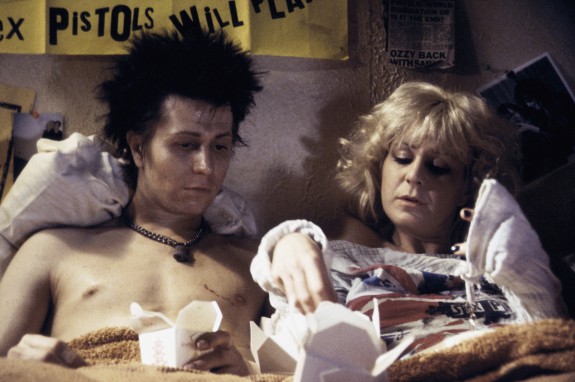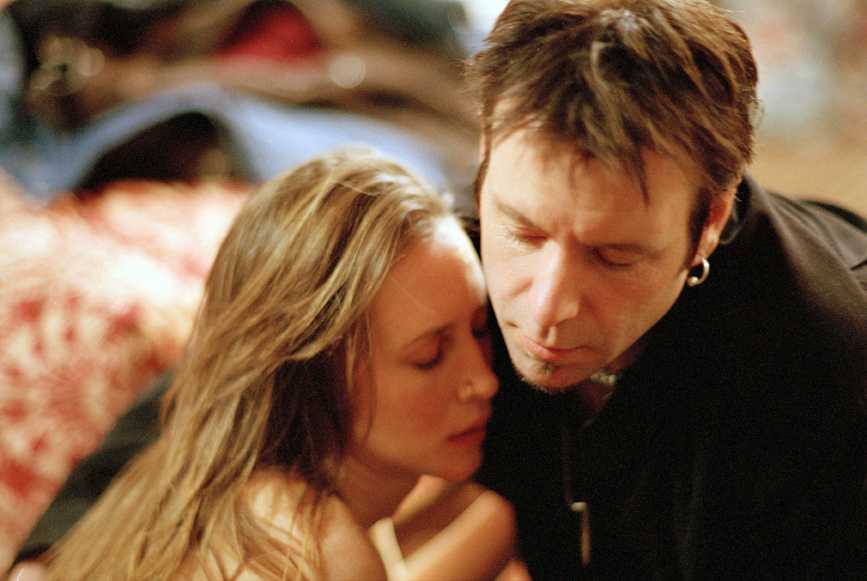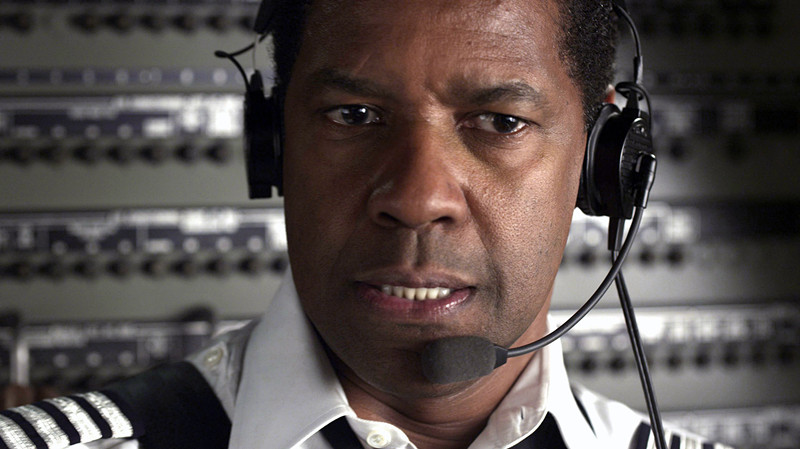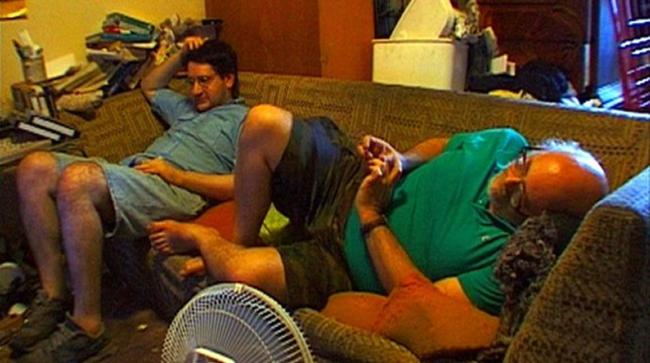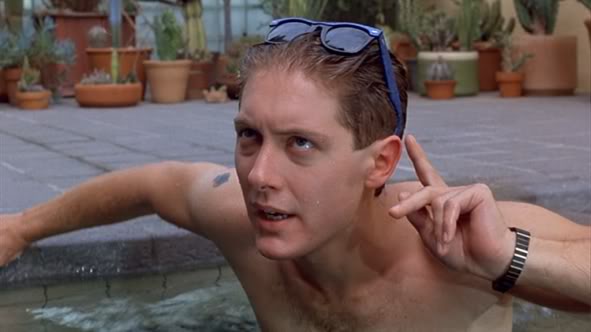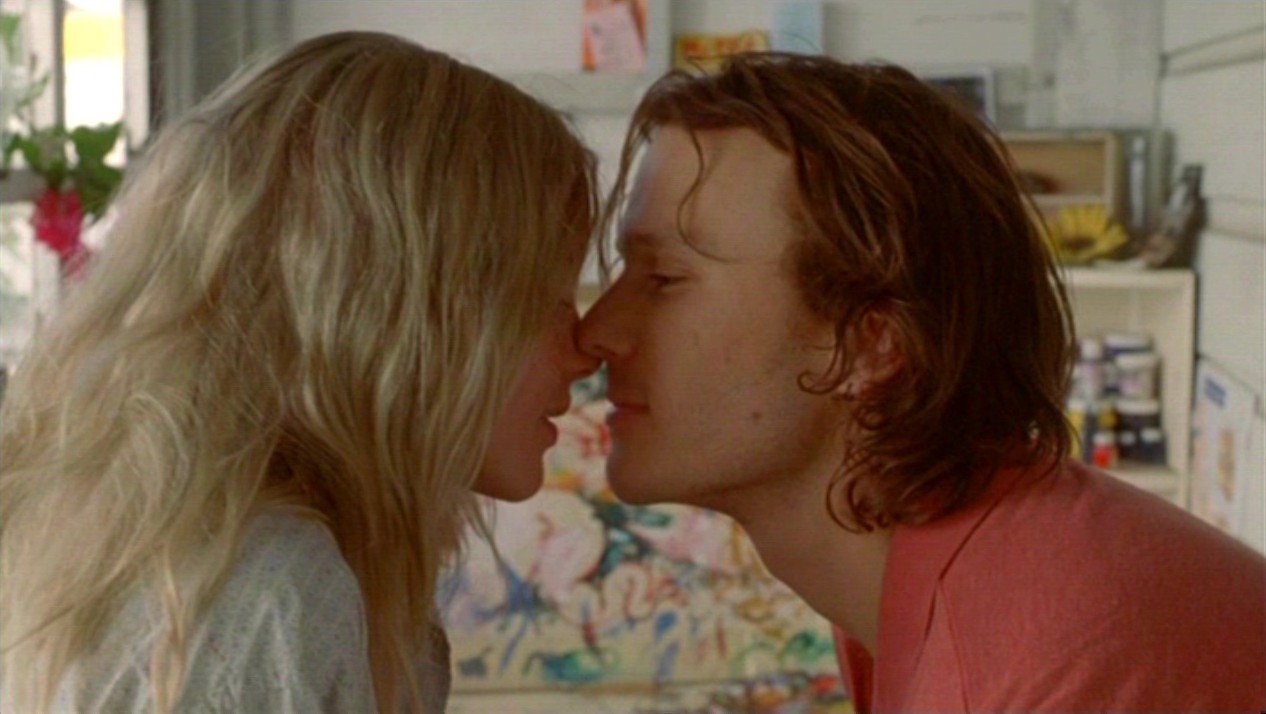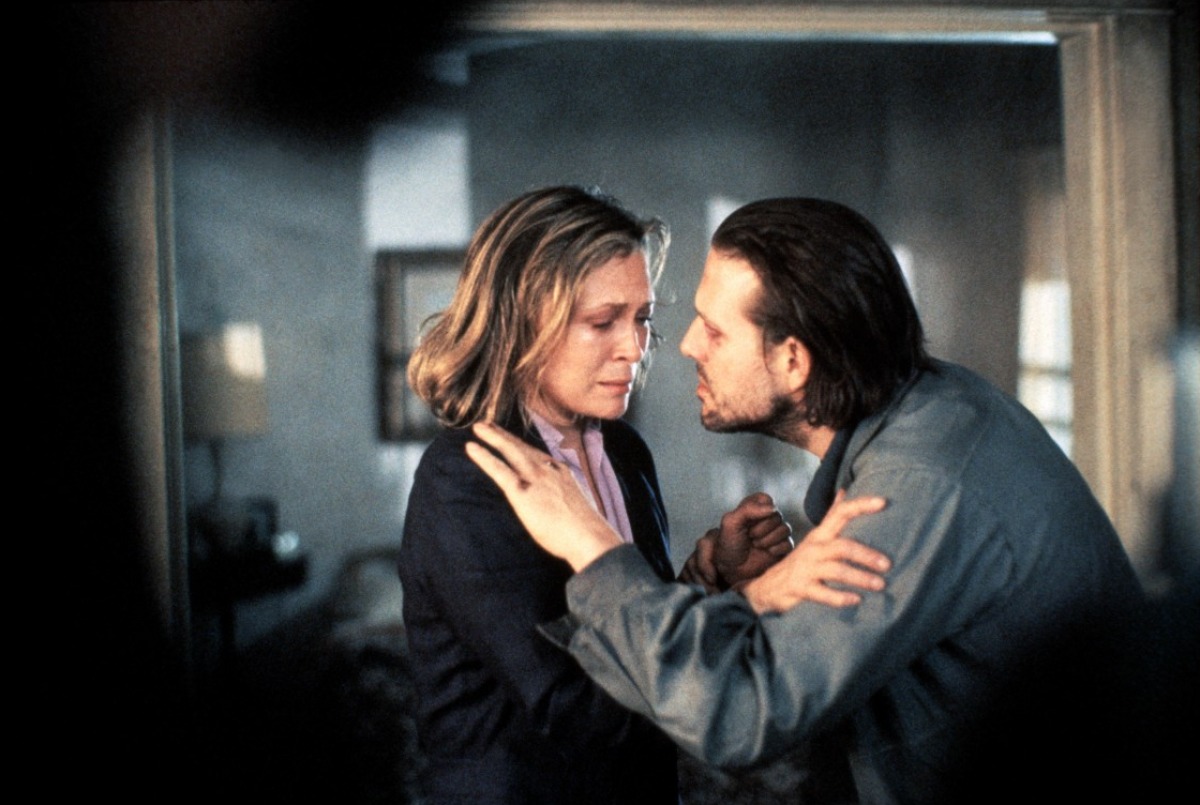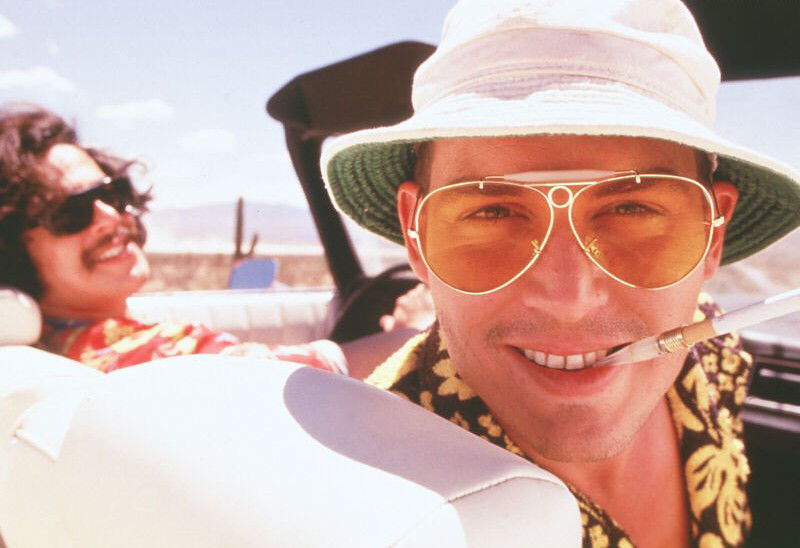21. Sid And Nancy (1986)
The cult classic biopic “Sid and Nancy: Love Kills” portrays the destructive relationship between Sid Vicious (Gary Oldman), bassist of the groundbreaking punk rock band the Sex Pistols, and his American groupie girlfriend, Nancy Spungen (Chloe Webb).
What is different about Nancy is that while most groupies would worship the ground their idol stood on, Nancy tries to make him an even bigger idol. She pushes him to realize his lost potential and to try harder so that he could really become someone.
Sid had just become a rock star at 17 and was barely an adult who could decide what to do by himself. They needed each other. But it’s the 70s and they live in the heart of the pivotal punk rock era, and there were drugs everywhere and every plan they had for scoring the most gigs and fans shifted to just getting another hit.
Most people know the ending to their story. Sid wakes up one morning after a drugged up night in New York’s Chelsea Hotel to find Nancy dead on the bathroom floor, stabbed. Vicious was arrested and charged with her murder and gave conflicting versions of a confession. Soon after he became suicidal and overdosed.
The film is full of noise, chaos and sadness, both when Sid and Nancy are in the middle of hundreds of fans, or alone together fighting, or dreaming or just being. They never lived long enough to really become what they wanted to be but what success they did have depended on drugs, long nights and each other.
22. Oslo, August 31st (2011)
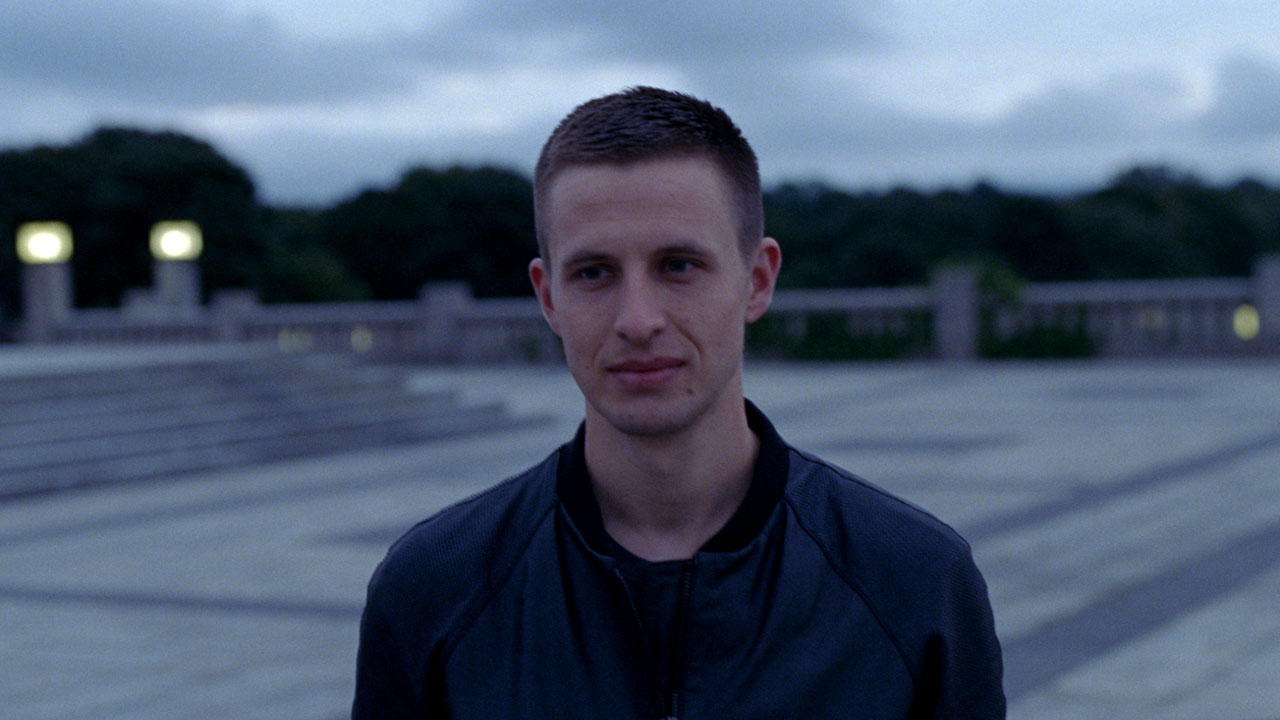
This critically acclaimed Norwegian film studies a different facet of drug addiction that most tales never get to – rehabilitation. Anders (Anders Danielsen Lie) is immersed back into society for one day during his stay in an Oslo rehab clinic.
Being released for a job interview with an avant-garde magazine for when he gets out of rehab, the rest of his time is spent walking around nostalgic streets, meeting old friends and calling a former girlfriend who never picks up. However, even though he is back to his life for one day – it no longer seems like his life. Anders is behind everyone else and is stuck in the past where no one belongs. His friends are getting married, having children, working not only for the weekend but to save for their futures.
Oslo has moved on without him, and he is left stranded not knowing which direction to move in. Despite having gained quality writing credits on his resume when he was clean, Anders has no faith in himself or a fresh start. He knows himself and knows what he will do.
23. Down To The Bone (2004)
There is a stereotype that there are two main types of drug-addicts – young, aimless teenagers who just get hooked and keep delving deeper into their addiction, and coked up Wall Street fanatics with lots of cash and lots of work to do. But in “Down To The Bone”, Vera Farmiga (in her breakout role) expands the typical, preconceived image of an addict by putting her into a context that everybody is familiar with – a mother.
In between preparing school lunches for her kids and long-hour shifts as a cashier at a superstore, Irene excuses herself to the bathroom to snort some coke to get herself through the day – to bag groceries fast enough to keep her job, to help her children, to be a wife – until she can’t. When she runs out of cash and even tries to use her son’s birthday money from her mother to buy cocaine, she admits she has a problem and checks into a rehab program.
The director and co-writer, Debra Granik, who now has received widespread critical acclaim and attention for “Winter’s Bone” in 2010, strays away from the traditional format of immediate redemption after failure and instead stays grounded in realism. Her film may be dark, low-budget and her directorial debut, but all these things make it all the more authentic and vivid, gaining her a win at Sundance.
24. Flight (2012)
Robert Zemechis’ live-action return strongly opens with coke, booze, a naked stewardess, and an out-of-control crashing airplane being saved by being flown upside down and crash-landing into an open field by none other than the commercial airline pilot captain Whip Whitaker (Denzel Washington) who had just topped himself off in the bathroom shortly beforehand with some vodka in his orange juice.
Whitaker is hailed as a hero, saving all but six people in the crash-landing but when his lawyer (Don Cheadle) and his union representative (Bruce Greenwood) show that the blood tests they had taken when he was admitted into hospital from the crash injuries confirm that he had been flying drunk, meaning that he could be sent to prison on alcohol, drug and manslaughter charges. His innocence depends on witnesses to his behavior like his co-pilot or the flight attendant and on his ability to get and remain clean.
Washington manages to be sympathetic, frustrating and brave throughout his portrayal of a man who technically did the right thing, but failed to do so ethically or legally.
The audience is forces to judge whether or not he would have even been able to do anything at all if he hadn’t been hyper alert from all the coke or as calm and cool if he hadn’t been slightly drunk. Either way, the “Forest Gump” and “Back to the Future” director doesn’t disappoint with his first live-action film since 2000’s “Cast Away”. An ironic note is that he is a private pilot himself.
25. Cinemania (2002)
For something to be considered an addiction, it must interfere with ordinary life responsibilities, like work, relationships, health and such. So when does a normal thing that everyone does like watching a movie become something arguably unhealthy? Well, this documentary focuses on five obsessive cinephiles in New York who spend as much as their life as possible at the movies. It illustrates the lengths they go through to see around 700 to 1000 films in a year, specifically at the cinema.
All with their specific tastes, routines and specialties, their life revolves around screening times and subway schedules. Literally, all of them have complex spreadsheets and journals calculating which movies in which locations and which subways to take in order to limit the time wasted and maximize the amount of time in front of the screen. They live off disability benefits, unemployment benefits, inheritance, that is – none of them really work besides one who works part time and is especially agitated by the fact that he is missing movies.
They take note of every film they watch, keep the ticket stubs, the programs, the press kits and any promotional merchandise they can find. One of them, Jack Angsteich, deliberately eats a constipating diet with no fruits or vegetables to minimize trips to the restroom so the film won’t be interrupted. They all take their bags with blankets, food, and medicine and some even know the phone numbers of the projectionists just in case the color or composition is off.
All have their own interests though like Bill likes European movies while Harvey, who is thought to be suffering from Asperger Syndrome, will watch literally anything, can quote the exact running time of every film he has ever seen from memory and owns hundreds of soundtrack LP’s, but doesn’t even own a turntable.
26. Less Than Zero (1987)
Very loosely based on American Psycho’s author Bret Eastor Ellis’ novel of the same name focuses on the quick defeat of the young, rich and charming cokehead Julian (Robert Downey Jr.). His addiction happens quickly, from Thanksgiving to Christmas. While his other friends do coke and all, they’re just riding along the Beverly Hills fast track.
They all look like models and go to private clubs with expensive cars and literally snort it with money. But they’re fine; they’re just living while Julian is floundering. He went too far with the nose dust and fell down the rabbit hole of despair, embarrassment and worst of all – poverty. Compare him to the perfectly superficial aesthetic of the film and he feels out of place.
Although most people don’t particularly care about Julian since he brought this upon himself, his best friend’s girlfriend/ former fling (Jami Gertz) is frightened about his disintegration and pleads her boyfriend Clay (Andrew McCarthy) to help him multiple times. But what can he do? Lecture? Scold? Beg? He’s done it all before to no avail. Julian’s drug dealer (James Spader) isn’t too harsh considering he lets him get away with stuff he wouldn’t allow others out of friendship, but friendship can’t erase $50,000 worth of dept.
The movie is notable since Robert Downey Jr. was actually struggling with a very similar problem to his characters off-screen a couple years later. Downey had even said that for him “the role was like the ghost of Christmas Future” since his drug habit resulted in his becoming an “exaggeration of the character” in real life. And as a bonus, the film includes an uncredited extra Brad Pitt as a preppy guy party-goer and is seen as Clay enters the party at the beginning of the film.
27. Candy (2006)
Adapted from Luke Davies’ novel “Candy: A Novel of Love and Addiction”, the Australian film focuses on the co-dependent and self-destructive relationship between two loveable junkies, the poet Dan (Heath Ledger) and the art student Candy (Abbie Cornish).
The film is organized in three acts, each composed of roughly three long scenes each and titled “Heaven, “Earth” and “Hell”. Despite struggling to gain money for every hit – from creating fake stories to Candy’s parents so that they could “borrow” some cash, stealing whatever they can and selling anything they don’t want, and even prostituting Candy when severely desperate – despite all that, they are ecstatically in love with each other.
But as Heaven shifts to Earth, reality starts to kick in and their addiction seems to worsen. They become hateful and despairing as they lose themselves and their families to heroin.
Heath Ledger and Abbie Cornish successfully manage to gain the audience’s sympathy and care through their addictive love, their eccentric scams and their honesty about themselves. There’s never a point where they are not straight forward about it. They know they are junkies, they know they have a problem and they know that they really should stop.
But, they also know the feeling of heroin and how they just seem to like each other more when they’re all doped up and not suffering from withdrawal symptoms. The audience roots for them to get the money, to buy the drugs, to be together, never mind everything else – reality is just in the background.
28. Gridlock’d (1997)
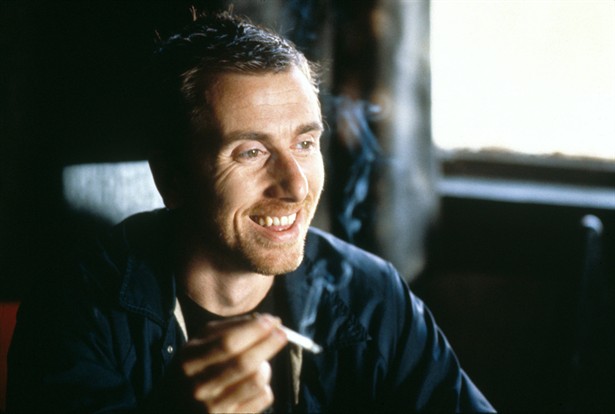
Set in Detroit, the gritty but comedic drama centres around a jazz trio during one long, dreadful and misfortunate day. Stretch (Tim Roth), who is on piano, and Spoon (Tupac Shakur) who plays the bass guitar and secondary vocals, are both heroin addicts who decide to go cold turkey after their clean-cut singer and Spoon’s girlfriend Cookie (Thandie Newton) overdoses on her first (and free) hit and becomes comatose.
Even though their circumstances are dire and their best friend may be dying, there is a grungy comedy that is only made possible with the dramatically ironic and sarcastic dialogue and great acting. The drug-addicted, bureaucracy-fighting and just comically unlucky duo holds the film to a cult classic standard.
While Roth was already a Tarantino regular and an Oscar nominee, Tupac was just making a name for himself in the acting community, of which he easily transitioned to in this film. However, Tupac unfortunately died before its release at Sundance.
29. Barfly (1987)
Barfly is written by “Ham On Rye”’s original author Charles Bukowski, whose life it is mostly based on. The semi-autobiographical work details the time Bukowski spent drinking heavily in Los Angeles and met a woman with a similar taste for booze, Jane Baker Cooley. Bukowski’s character is exchanged with his alter-ego Henry Chinaski, who is portrayed by Mickey Rourke and whose last name rhymes with Bukowski’s.
The impoverished alcoholic lives alone in a rundown apartment and writes poetry and short stories. He takes jobs when he can find them and at night drinks excessively at a bar where, on one night, he comes in already drunk and starts drinking rudely out of other customers’ glasses, resulting in him getting thrown out and forced to find somewhere else to numb his sorrows.
He goes to another place where he meets the classy looking drunkard Wanda (Faye Dunaway) and the two bond over their loneliness, dependency on booze, and leave to go buy more drinks from a liquor store (all with Wanda’s lover’s money) and steal unripe corn from a field.
As circumstances change, characters normally do so too. But in “Barfly”, Henry remains just that – an annoying nuisance that no one at the bar really likes, specifically the clean-cut and sober bartender Eddie (Frank Stallone) who constantly has to throw him out, request his money, break up his fight, or actually fight him to prove a point.
The film is directed by Barbet Schroeder, who commissioned the original screenplay by Bukowski and then spent eight years trying to get it made, even threatening to cut off his own fingers if the Cannon Group president did not finance it, which they did.
30. Fear And Loathing In Las Vegas (1998)
Terry Gilliam’s black comedy road adaptation from Hunter S. Thompson’s autobiographical novel of the same name is one of those films that most people either love or hate. Raoul Duke (Johnny Depp) narrates in his “stream-of-altered consciousness” report as he and his lawyer Dr. Gonzo (Benecio Del Toro) travel across the Nevada desert to Las Vegas with a trunk full of marijuana, acid, mescaline, cocaine, uppers, booze and ether.
Thompson’s guerrilla approach was coined “gonzo journalism” and it included getting as high as possible, throwing himself in the middle of a story and recording it with hysterical exaggeration. The proper plot and story at which they are travelling there for is barely at the forefront of the film. Thompson has been sent to Vegas to cover the Mint 400, a desert motorcycle race, and stays after to report on a convention of district attorneys, explaining why Gonzo is with him.
But that’s not what’s important. What is important is how messed up they become with all the drugs they take and how they land into new and confusing situations. They hallucinate giant bats and casually complain about them while driving; they pick up hitchhikers (a blond, unrecognizable Tobey Maguire), do more drugs with a random girl (Christina Ricci), and try buying an orangutan.
While there were many possibilities for Duke like Jack Nicholson, Dan Aykroyd, John Malkovich, and John Cusack, once the author (Thompson) met Depp, he was convinced that no one else could play him, and he was probably right. Depp took the role very seriously and extensively prepared for it by studying Thompson’s habits and mannerisms and researching the role for four months solid.
He went through his personal notebooks, traded his actual car for Thompson’s iconic red Chevrolet Caprice convertible or “The Great Red Shark” and drove all around California. His whole look is borrowed from Thompson, literally. He uses his cigarette filter, his Hawaiian shirts, his jacket, his silver medallion, his IDs, and Thompson even shaved Depp’s head to match his own male pattern baldness.
Not to mention what Del Toro went through to inhabit Dr. Gonzo, who is based on Thompson’s friend Oscar Zeta Acosta, who disappeared sometime in 1974. He gained more than 45 pounds in nine weeks before filming began just to look more like Acosta. Many other filmmakers had a chance with this film before Gilliam got his hands on it, like Martin Scorsese and Oliver Stone, but it’s probably better that Gilliam got it since a surreal atmosphere is one of his trademarks.
Author Bio: Susannah Farrugia is an undergraduate Psychology student at the University Of Malta. Her life is measured in films and television shows. She enjoys drawing scenes and designing posters based on the films she has seen.
